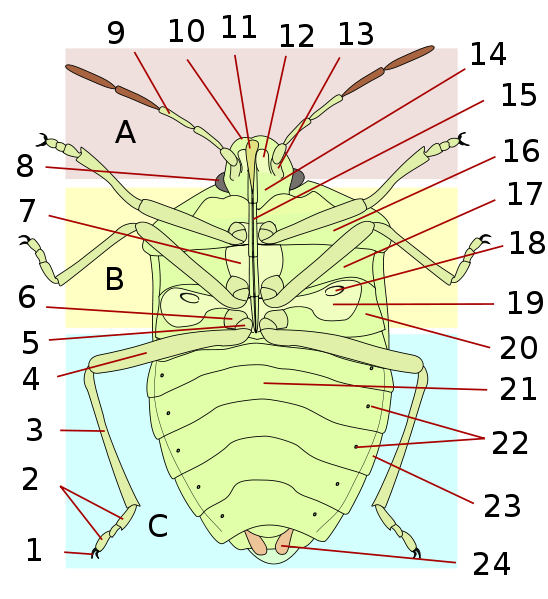Adaptation
L. americanus nymph obtain oxygen through their cuticle. Cuticle is a multi-layer structure outside of epidermis of many arthropods. It is made up of insoluble proteins, polysaccharide, chitin, and lipids.
However, adult L. americanus must breath in oxygen directly from the air to support its high activity.
Like many other aquatic bugs, L. americanus has a specialized tube in the abdomen to trap air from the atmosphere to bubbles and trap them underneath the wings. The abdomen has holes, called spiracles, to allow gas exchange between the body and the water bubble.

The black dots near the edge of the abdomen represent the spircales.
 L.
americanus is similar to the fungi in terms of table manner- they both
use exoenzyme. After L. americanus captured its prey with the
powerful forelegs, it inject saliva through the proboscis. The saliva
contains toxins that paralyze the prey and enzymes that fluidize the
internal structures.
L.
americanus is similar to the fungi in terms of table manner- they both
use exoenzyme. After L. americanus captured its prey with the
powerful forelegs, it inject saliva through the proboscis. The saliva
contains toxins that paralyze the prey and enzymes that fluidize the
internal structures.